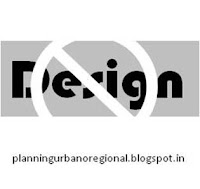Politics of Design and need of Design democracy
Apart from invention of wheel and some other similar historical or contemporary breakthroughs or design innovation which have served humanity to achieve better life and lifestyle, design has evolved in a very controlled manner at least in recent history and apparently it’s not by coincidence, it’s by choice, the choice of few able hands and minds who have manipulated the evolution of design for their personal monetary benefit. Design has lost its freedom and meaning since the commercialization of design has taken place. Contemporary design process has become less of necessity and more of luxury, apart from those which are for advancement of mankind like computers, rocket science and all.
Apparently designs are manipulated across the length and breadth of product industry to skew and control the market demand and trick the customers, whether its car or washing machine or laptop or handbag or any household product. You see, every item has a line of product to cater to every economical strata of society, that makes perfect sense – something for everyone! Story doesn't end here, it’s just the beginning, beginning of whole gimmick of manipulative product development and market control philosophy. Have you ever questioned why the product “X1” that you bought at cheaper price is average in looks, in its aesthetic appeal and in design than the similar high end product “X2” with its classy elegant look? Ever wondered why the products of same company has different aesthetic appearance across its product range, though its same materials, same product DNA, same manufacturer, same factory, almost same production time, same technology? Is it coincident that if you pay less you will get an inferior looking product no matter what is the product and higher you pay better aesthetical products you will get, no matter what is the product or is it that they have purposefully handed over average design to you and deprived you of the great design of the higher range product so that you will come back to buy the better looking product next time? We are not talking about imbedded technology, of course technology comes at a price.
Is it that we have accepted this hierarchy of design aesthetics as an integral part of business and our daily life? This is true for any product; let’s take car, for example. Is it a coincidence that the same designer or company who produces that strikingly beautiful design of highest segment car with those passionate and careful curvatures of car body also produces average looking box like cars with primitive decades old design sense in its lower price segment? Is it a natural process of design or this vast aesthetic gap between cheap and expensive product has been created purposefully so that people will appreciate and crave for higher segment product? Otherwise what is holding back companies or designers to give a wonderful design and aesthetics to each of its customer irrespective of their economic profiles, with products prices varying primarily due to its embedded technology or robustness and uniqueness of inbuilt content or additional functional features?








But after all how does it matter, since there is no sense of design ownership and appreciation left in all of us after centuries of design exploitation and manipulation, since we seem to have accepted the fact that design and aesthetes are for rich and ultra rich and average person has no right to ask for a better designed product on an affordable price. Design democracy is only possible when people will feel the need for "right of design aesthetics". It’s high time that design community and product development companies should come forward and liberalise the covert design process and shed the design monopoly, which will only help them accelerate product growth process and a common man will get a better designed product in their budget.
By- Anoop Jha













